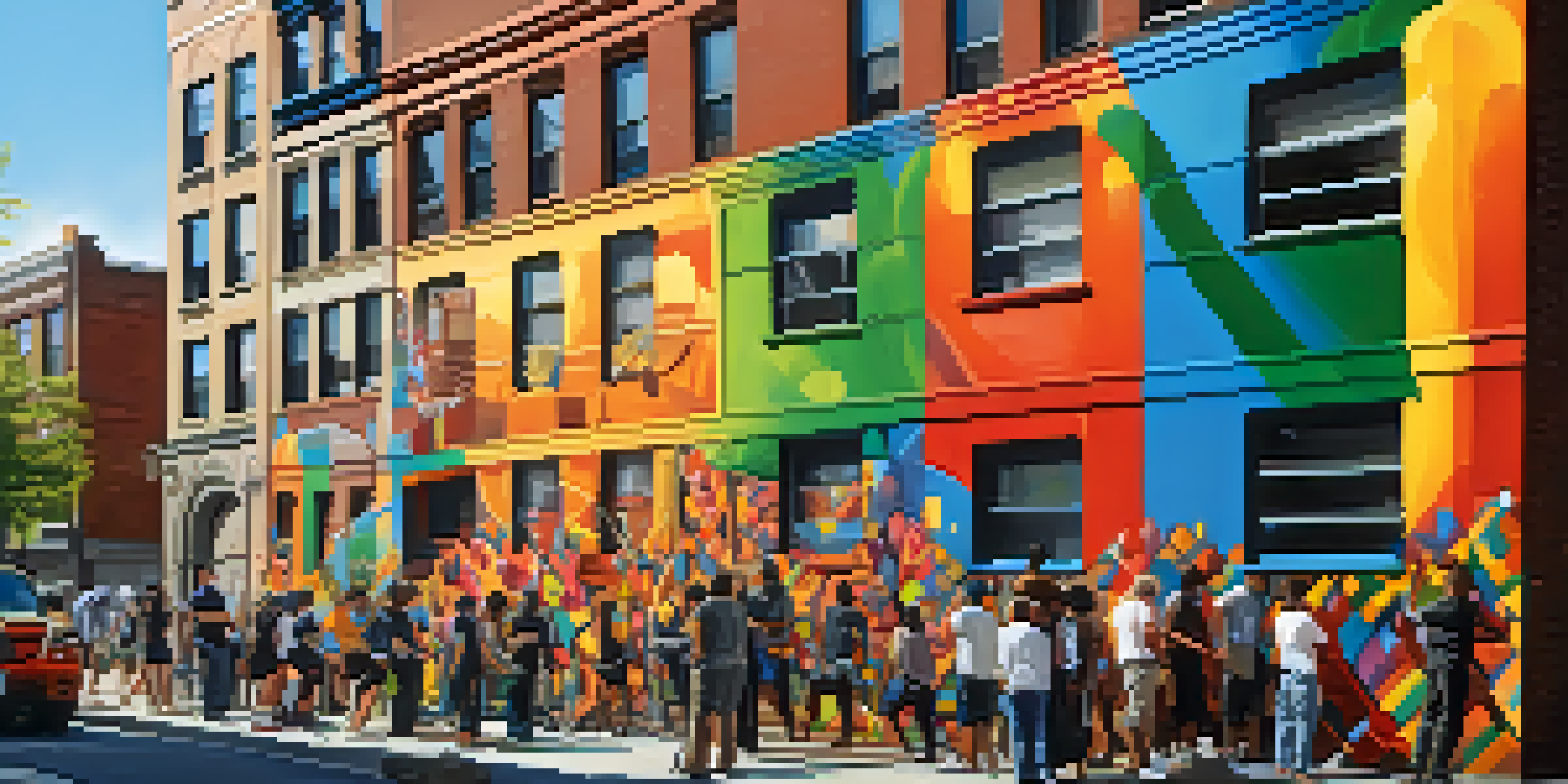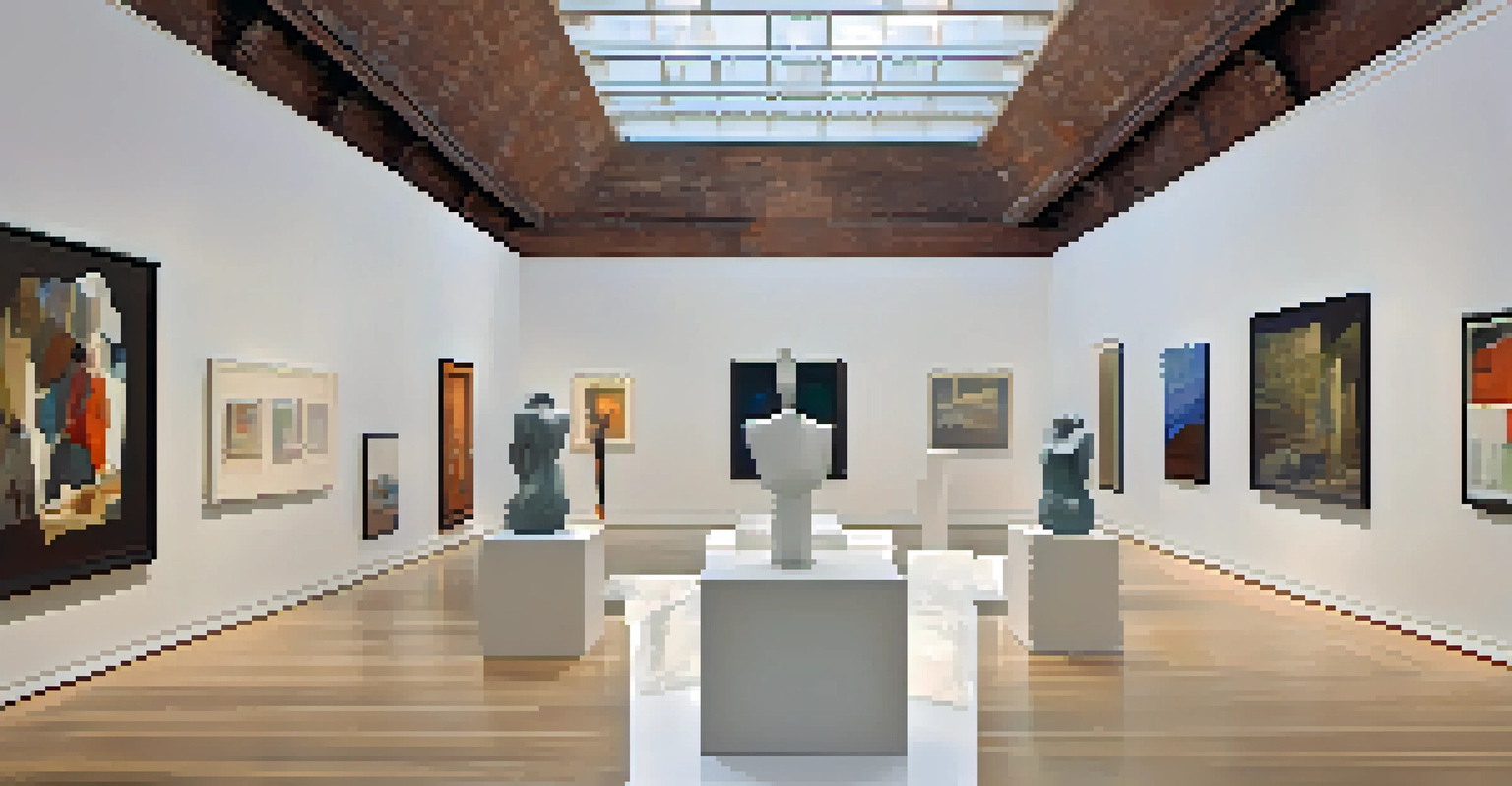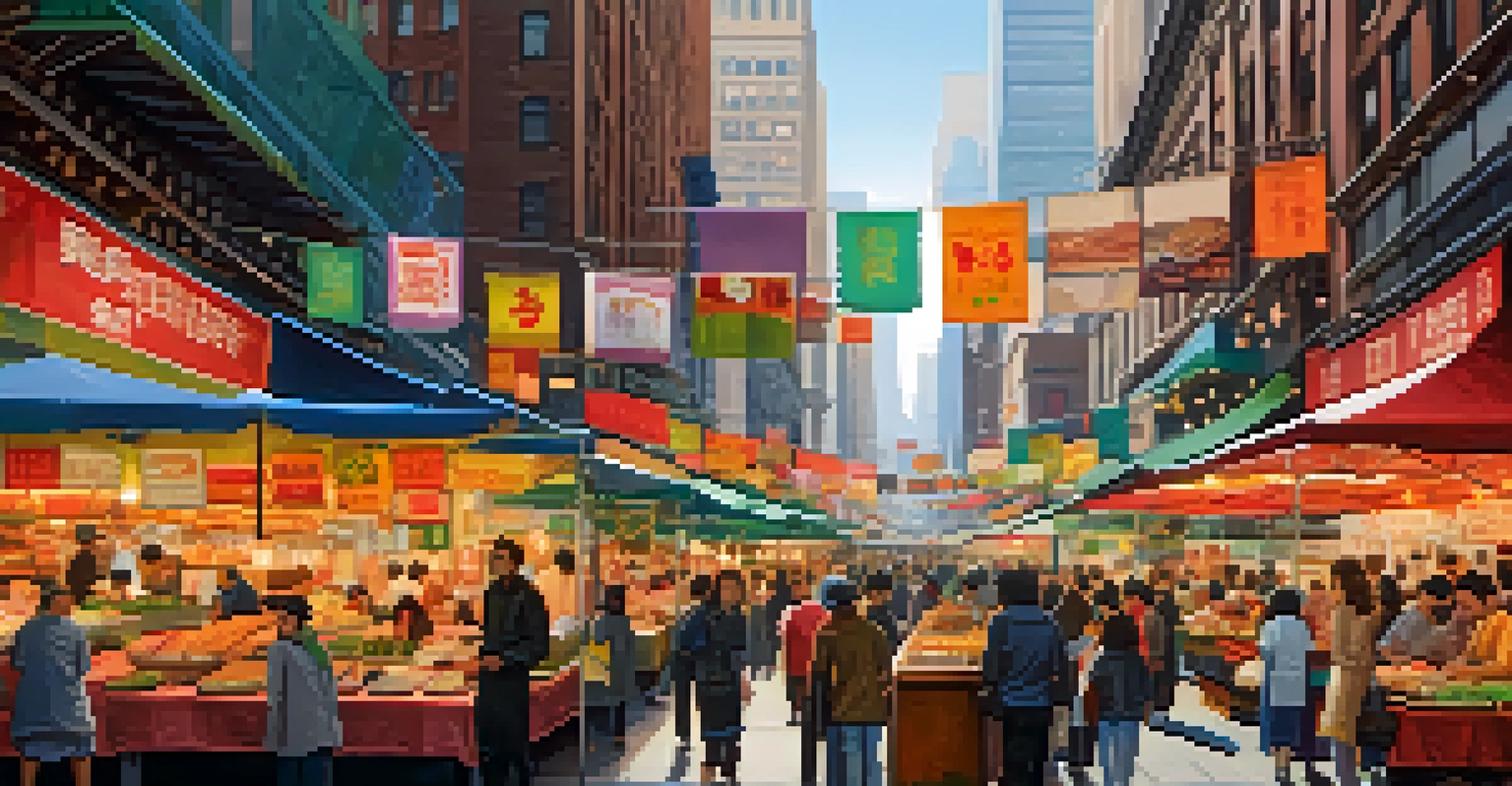Art and Expression: Cultural Diversity in New York

The Melting Pot: New York's Cultural Landscape
New York City is often called a melting pot, and for good reason. With over 800 languages spoken, the city is a tapestry of cultures that influence its art scene. Each neighborhood tells a unique story, from the vibrant murals in Bushwick to the traditional performances in Chinatown.
Art is the most beautiful of all lies.
This rich diversity is reflected in the artistic expressions found throughout the city. Artists from various backgrounds bring their heritage, experiences, and perspectives to the forefront, creating a dynamic dialogue among cultures. For instance, the fusion of hip-hop and Latin music in the Bronx illustrates how art evolves through collaboration.
Moreover, this cultural blend fosters creativity and innovation. Artists are inspired by one another, leading to new genres and art forms that resonate with a broader audience. In a city where art is literally around every corner, the possibilities for expression are endless.
Street Art: Voices from the Community
Street art in New York City serves as a powerful form of expression, often reflecting the voices of the community. Murals adorn the sides of buildings, showcasing messages about social justice, identity, and resilience. For example, the renowned 'Fearless Girl' statue symbolizes female empowerment and has sparked conversations worldwide.

Many street artists come from diverse backgrounds, using their art to address issues that matter to them. This grassroots movement transforms urban spaces into galleries of activism, where every stroke of paint tells a story. It’s a vivid reminder that art can challenge societal norms and inspire change.
Diverse Cultures Shape NYC's Art Scene
New York City's myriad cultures blend to create a vibrant and innovative artistic landscape that reflects the city's unique identity.
Additionally, street art invites public engagement, breaking down barriers between artists and the audience. People from all walks of life can connect with the art, making it an inclusive form of cultural expression. As you walk the streets, you become part of a living canvas that reflects the city's heartbeat.
Museums as Cultural Beacons
New York's museums play a crucial role in preserving and showcasing cultural diversity. Institutions like the Museum of Modern Art (MoMA) and the American Museum of Natural History highlight global perspectives through their collections. These museums don't just display art; they tell stories of humanity's shared experiences.
Culture is the widening of the mind and of the spirit.
Exhibitions often feature works from underrepresented artists, providing a platform for voices that might otherwise go unheard. This commitment to inclusivity enriches the visitor experience, allowing a deeper understanding of different cultures and artistic expressions. For instance, the Studio Museum in Harlem focuses on African-American artists, celebrating their contributions to the art world.
Furthermore, these cultural institutions foster dialogue and community engagement through programs and workshops. They invite people to explore their creativity, learn about various artistic traditions, and connect with others. This mission to educate and inspire underscores the importance of art as a bridge between cultures.
Theatrical Diversity: A Stage for All Voices
The theater scene in New York City is a vibrant reflection of its cultural diversity. From Broadway to off-Broadway productions, audiences can experience stories from various cultural perspectives. Plays and musicals often tackle social issues, bringing attention to the complexities of life in a multicultural city.
Diverse storytelling is crucial in creating empathy and understanding among different communities. Productions like 'Hamilton' have redefined the narrative by casting actors of color in key historical roles, sparking conversations about representation and inclusion in theater. This approach not only entertains but also educates audiences about America's multifaceted history.
Street Art as Community Expression
Street art in NYC serves as a powerful voice for the community, reflecting social issues and fostering public engagement.
Moreover, local theaters continue to champion emerging voices through workshops and festivals. These platforms allow artists from diverse backgrounds to showcase their work, fostering a sense of belonging in the arts community. The result is a rich tapestry of theatrical expression that resonates with audiences far and wide.
Culinary Arts: A Fusion of Flavors
Food is an essential part of cultural expression, and New York's culinary scene is no exception. The city boasts a vast array of restaurants and food stalls, each representing different cultures and traditions. From authentic dim sum in Chinatown to mouth-watering tacos in East Harlem, every bite tells a story.
Chefs often draw inspiration from their heritage, blending traditional recipes with modern techniques. This fusion creates innovative dishes that reflect the city's dynamic food landscape. For example, Korean BBQ tacos showcase how culinary arts can transcend cultural boundaries, offering a delicious taste of diversity.
Moreover, food festivals and markets celebrate this culinary diversity, inviting locals and tourists to explore different flavors. Events like the Smorgasburg in Williamsburg highlight the creativity of food entrepreneurs who bring their unique backgrounds to the table. In every corner of the city, the culinary arts serve as a delicious reminder of New York's rich cultural mosaic.
Music: The Soundtrack of Cultural Exchange
New York City has long been a hub for diverse musical genres, drawing influences from around the globe. Jazz, hip-hop, salsa, and reggae all coexist in this vibrant city, creating a unique soundscape that reflects its cultural diversity. Iconic venues like the Apollo Theater showcase talents from various backgrounds, celebrating the rich tapestry of musical expression.
The city's music scene is not just about performance; it's also about collaboration. Artists often blend genres, resulting in fresh sounds that resonate with audiences. Take, for example, the rise of reggaeton, which combines Latin rhythms with hip-hop influences, appealing to fans from different cultures and backgrounds.
Food as Cultural Storytelling
The culinary scene in New York showcases a fusion of flavors that narrate the diverse backgrounds and traditions of its inhabitants.
Furthermore, music festivals and block parties bring communities together, allowing people to celebrate their heritage through dance and song. Events like the New York Salsa Congress showcase the city’s dedication to preserving and promoting cultural traditions. In this way, music becomes a universal language that connects us all.
Art and Expression: A Reflection of Identity
Art is a powerful medium for individuals to express their identities, especially in a diverse city like New York. Many artists draw from their personal experiences, using their work to explore themes of race, gender, and cultural heritage. This introspection not only enriches their art but also allows audiences to connect on a deeper level.
For instance, the work of artists like Kehinde Wiley challenges traditional notions of representation by celebrating people of color in classical art forms. Such pieces provoke thought and invite discussions about identity and belonging in contemporary society. Through their art, these creators encourage others to embrace their unique stories.

Moreover, community art projects often empower individuals to express themselves collectively. Programs that involve local residents in the creation of public art foster a sense of ownership and pride in their neighborhoods. Ultimately, art becomes a reflection of identity, serving as both a mirror and a canvas for the city's diverse population.